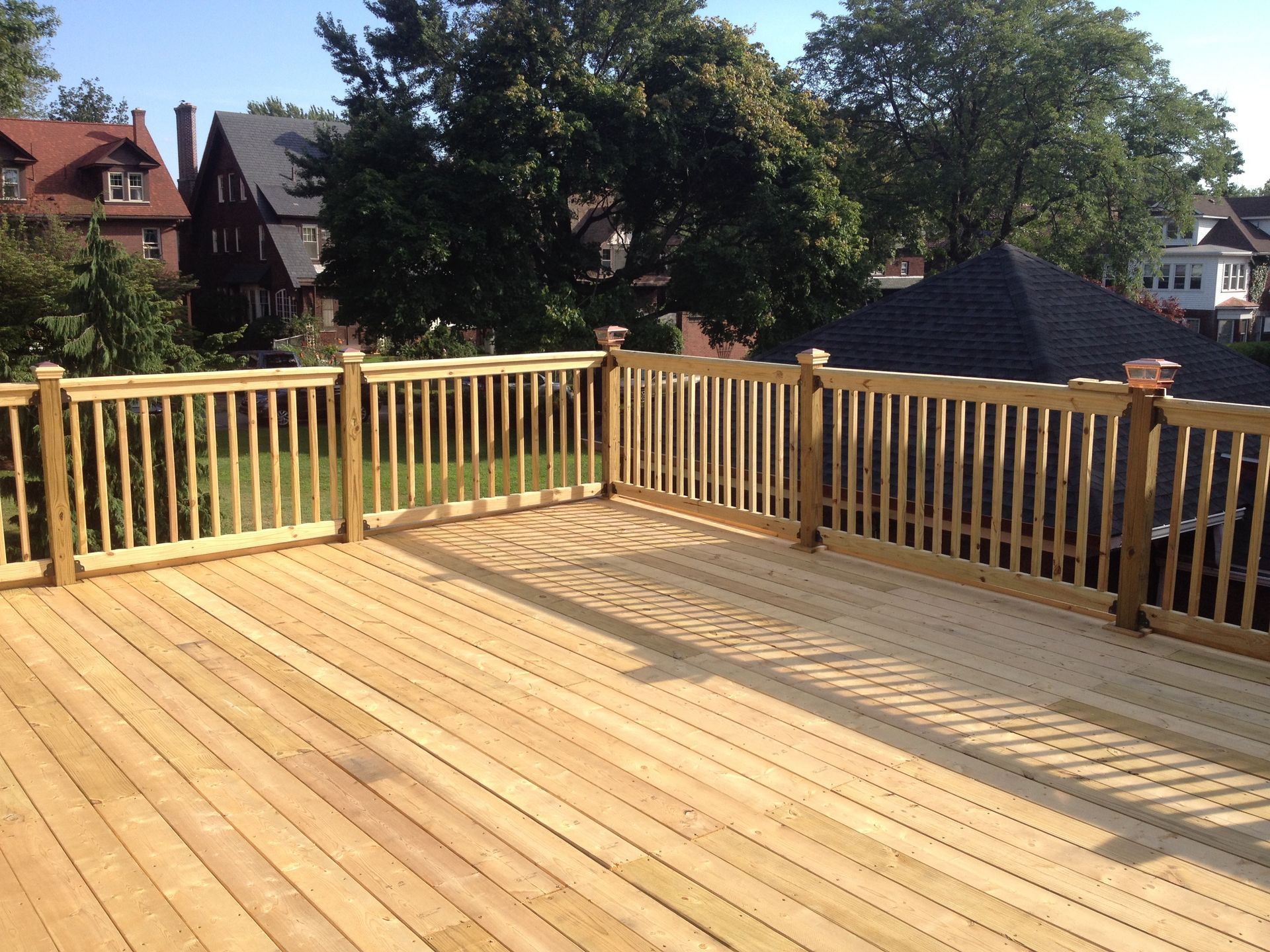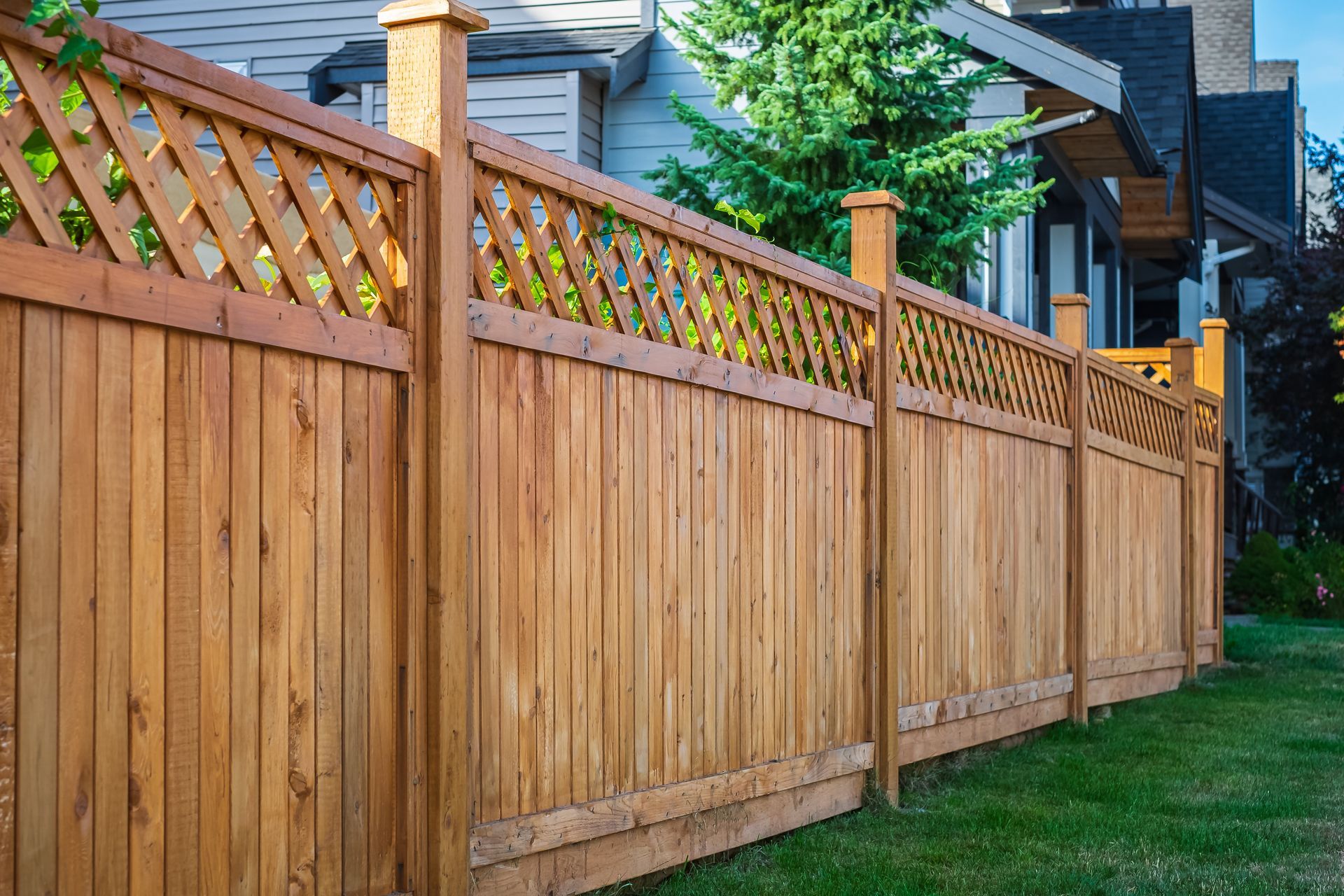How to Identify and Prevent Deck Damage

Deck and Fence London is committed to helping homeowners in London, Ontario, create beautiful and durable outdoor living spaces. While decks provide a versatile area for relaxation and entertainment, they are also exposed to the elements year-round, which can lead to wear and tear over time. In this blog article, we'll discuss how to identify common deck damage and provide tips on how to prevent it, ensuring the longevity and safety of your outdoor oasis.
Identifying Deck Damage:
- Rotting or Decaying Wood:
- One of the most common signs of deck damage is rotting or decaying wood. Moisture accumulation, fungal growth, and insect infestations can cause wood fibers to break down over time, compromising the structural integrity of your deck. Inspect the surface of your deck for soft or spongy areas, discoloration, and signs of mold or mildew.
- Loose or Missing Fasteners:
- Over time, the fasteners (screws, nails, bolts) that hold your deck together may become loose or corroded, leading to instability and safety hazards. Inspect the deck surface, railing, and stairs for loose or missing fasteners and tighten or replace them as needed.
- Warping or Cupping Boards:
- Exposure to moisture, sunlight, and temperature fluctuations can cause deck boards to warp, cup, or twist. Warped boards not only detract from the appearance of your deck but also create trip hazards and compromise structural integrity. Look for uneven or distorted boards and replace them to ensure a level and stable deck surface.
- Cracks or Splinters:
- Cracks, splinters, and surface damage are common issues that can develop on older or poorly maintained decks. These defects not only detract from the aesthetic appeal of your deck but also pose safety risks, especially for barefoot pedestrians. Regularly inspect your deck for signs of damage and address any cracks or splinters promptly to prevent injury.
Preventing Deck Damage:
- Regular Maintenance:
- Implement a regular maintenance routine to keep your deck in top condition year-round. This includes sweeping debris, removing leaves and branches, and cleaning the surface with a mild detergent and water solution. Additionally, trim nearby vegetation to promote air circulation and prevent moisture buildup.
- Apply Sealant or Stain:
- Protect your deck from moisture, UV rays, and fungal growth by applying a quality sealant or stain every few years. Sealants create a protective barrier that repels water and prevents wood decay, while stains enhance the natural beauty of the wood and provide additional UV protection.
- Ensure Proper Drainage:
- Proper drainage is essential for preventing water buildup and minimizing moisture-related damage to your deck. Check that gutters and downspouts are clear of debris and direct water away from the foundation of your home. Additionally, ensure that the slope of your deck allows water to drain away from the house and towards the yard.
- Conduct Regular Inspections:
- Schedule annual inspections of your deck to identify any signs of damage or deterioration early on. Pay attention to areas prone to moisture accumulation, such as around posts, joists, and stair stringers. Promptly address any issues to prevent further damage and ensure the safety of your deck.
Conclusion:
Regular maintenance and proactive prevention are key to preserving the beauty, functionality, and safety of your deck for years to come. By identifying common deck damage and implementing preventive measures, you can protect your investment and enjoy your outdoor living space to the fullest. If you need assistance with deck maintenance, repair, or installation, contact Deck and Fence London for professional service and expert guidance in London, Ontario.










